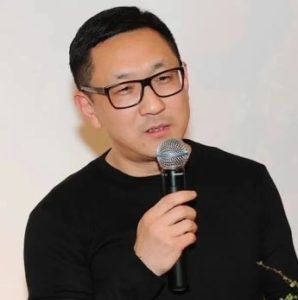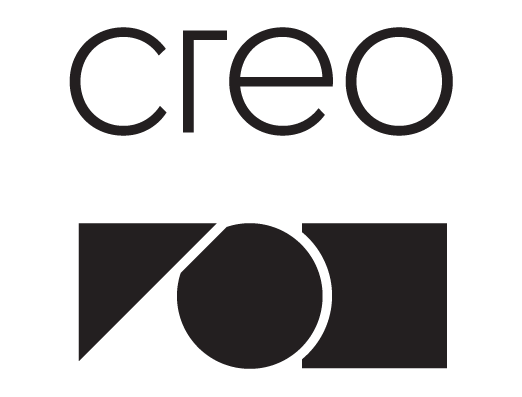Renowned art collector Zhou Tong started his journey by collecting Ming Dynasty furniture and then gradually expanded to include contemporary Asian oil paintings. Zhou developed an interest in photography and video art around 2007/2008. He was a guest speaker in the Conversations sector at the third edition of PHOTOFAIRS Shanghai, sharing his stories and perspective on art collecting, much like our previous guest, Ouyang Kunlun, who was featured in our previous edition of Conversation with Collector.
Zhou sees collecting photography and video art as something he can proudly talk about with his community. Because, given the history of medium development, photography and video art stand out as the most cutting-edge art forms today. Throughout our conversation, he frequently employed the term “brag”, although his intention goes beyond the conventional meaning of the word. “Your passion should lie in art itself, not the financial investment,” he stressed in a quite serious tone. But then, in a lighthearted manner, much like a playmonger (*a traditional term from Beijing, usually referring to someone who “plays” in a certain area and takes it to the extreme), he added, “The most enchanting aspect of collecting photography and video art is that I can see something within it that you can’t. You can only listen to what I tell you.”

Zhou Tong
We covered a wide range of artists in our conversation. We discussed, for example, Ding Shiwei, a master in using digital mediums to represent and intervene in the material world; Tao Hui, skilled at weaving experimental visual narration through personal memories, visual experience and popular culture; and Chen Chieh-jen, who puts forward different ideas of society through various artistic experiments. When covering a specific artist, Zhou showed a remarkable ability to immediately revive the “captivating moments” within this artist’s creation, vividly connecting them to the specific atmosphere and feelings he experienced after seeing the artwork. His profound engagement with photography and video art on a quasi-spiritual level permeated our entire conversation.

© Chen Chieh-jen, Realm of Reverberations, 2014. Courtesy of Long March Space
Besides art collecting, Zhou writes for art columns and curates art exhibitions. In recent years, he has been hosting the Leisure Time Art Podcast (闲弹时光艺术播客), where he engages in conversations with artists and other experts across the industry. This podcast boasts an impressive line-up, including established artists like Zhang Peili and Qin Yifeng, emerging talents such as Wang Tuo, Ma Haijiao, and Guo Xi, as well as younger artists like Xu Jiaqi, Zhao Rundong, Lan Lan, Zhu Jinkun, and more. These works, extending beyond his involvement in art collecting, have naturally become his unique resources in the art world.
When discussing the current art market and its prospects, Zhou conveyed a sense of optimism. He remarked, “Shanghai is probably one of the cities with the most vibrant art atmosphere in the world. There are more and more people visiting museums, galleries, and art institutions over the weekend. Whether they are there for social media check-ins, to take pictures, or for a sincere appreciation of the artworks, the fact is that they are getting closer to art and actively consuming it. As long as we have more people paying attention to art, it will thrive and progress.”
PF: Would you mind sharing an overview of your photography and video art collection?
Zhou: My video art collection includes works by Geng Jianyi, Zhang Peili, Chen Jiaren, Kan Xuan, Li Liao, Li Binyuan, Cheng Ran, Li Ran, Ding Shiwei, Liu Guoqiang, He Cairou, Lin Ke and Yi Lian. I have also collected photography works from artists like Xie Deqing, Jiang Zhi, Hong Lei, Sun Yuan & Peng Yu and Wolfgang Tillmans.

© Li Liao, A Single Bed, 2011. Courtesy of Zhou Tong

© Ding Shiwei, Aesthetic Distance No.1, 2020. Courtesy of Zhou Tong

© Liu Guoqiang, Rectangle and Circle, 2019. Courtesy of Zhou Tong
PF: When did you begin intensively collecting photography and video art?
Zhou: I don’t have the exact timeline, but it was likely around 2007 or 2008, when there were many intriguing contemporary art exhibitions and quite a few young and experimental galleries in China. I started paying attention to photography and video artists like Huang Ran and Cheng Ran around that time.
PF: Has there been a particular photography or video art piece that challenged or reshaped your view of the medium?
Zhou: Nearly every piece in my collection made me reevaluate my opinions on the medium as well as the modern world and society. I’ve always thought there are vast possibilities in photography and video art. I remain hesitant to claim that I have fully grasped or understood this medium, even after many years of collecting.
PF: What kind of artworks do you find compelling?
Zhou: I believe truly exceptional artists share a common gift: the ability to capture the nuances of things often overlooked or deemed inconsequential. In a time when societal structure is deeply entrenched, I find myself particularly drawn to artists who express concerns about the living conditions of the most underprivileged in society and create a space within their artworks for them to reclaim their voice. This sort of commitment is reflected in several artworks in my collection, such as To Be Your Correct Self by Geng Jianyi and Li Binyuan’s The Deathless Love.

© Li Binyuan, Deathless Love, 2012. Courtesy of Zhou Tong

© Geng Jianyi, To Be Your Correct Self, 2005. Courtesy of Zhou Tong
PF: Are there any other themes in your collection, besides the ones we previously mentioned?
Zhou: I don’t believe in adhering to predetermined themes. From my perspective, the contemporary world is marked by its inherent fragmentation. I view collecting more as a process of assembling a jigsaw puzzle than as a quest for specific themes. Each artwork I add to my collection plays a role in constructing a more comprehensive portrayal of my world.
PF: From a collecting perspective, what makes photography and video art special?
Zhou: Video art is a modern medium that originated in filmmaking. A video is a data stream with substantial capacity and information, granting it a unique ability to deliver instant and vivid experiences—often referred to as a “captivating moment,” which sets it apart from most sculptural or artworks on the shelves. For that very reason, those who create video art must possess a deep understanding of the images and master them. For example, a Hollywood industrial blockbuster typically consists of over a thousand shots, while Hou Hsiao-hsien’s Flowers of Shanghai only has thirty-eight shots, and Li Ran adopted a single-take approach in his work, Mont Sainte-Victoire. However, in my opinion, Li Ran’s work has the same deep emotion and profound meaning as the previous two.

© Li Ran, Mont Sainte-Victoire, 2012. Courtesy of ShanghART Gallery
PF: What makes you decide to acquire or not acquire an artwork?
Zhou: I usually rely on my intuition, especially the first impression. Any hesitation suggests I may not connect with this particular piece. In my perspective, a truly impactful artwork should be an extension of your life and resonate with it. You just get it.
Additionally, I value cultural identity embedded within artworks. For photography or video art, cultural background proves to be paramount. It intricately resides behind the artwork, offering a comprehensive reflection of history, reality, and the narrative of the current space and time. I always say that a skilled photographer or video artist must have sharp and in-depth thinking. Because this kind of art cannot simply follow the paths of abstraction and minimalism, the artists must intricately and insightfully organize their visual language. I think that works which, at first glance, appear vulgar, deliberate, or poorly executed and detached from the local context should be dismissed. However, some works can’t be judged at first glance and a deeper examination is required, as these pieces have, at the very least, captured our interest and invited us to reflect on them and question them.
PF: How do you perceive the trend of photography and video art becoming increasingly “novel,” “strange,” and “unique” due to technological advancements?
Zhou: This is exactly what a new artistic medium would bring and is closely tied to the influx of young artists in this field, especially those born between 1995 and 2000. It is inevitable for photography and video art to become more digital and virtual because the artists behind them grow up with gaming and AI as a part of their lives. So, when we encounter those “novel,” “strange,” and “unique” works, my approach is to avoid premature judgments and instead immerse myself in and learn from them. I believe it keeps your mind young.
PF: What research do you usually do when collecting?
Zhou: I generally don’t do much research. Instead, I go to gallery shows to explore and discover artworks. I believe that an established gallery will first make a selection of good artists and reflect this through the exhibitions it organizes. Additionally, I engage in conversations with artists and pay attention to the ones they have their eyes on. The established artists’ circle might act as a kind of natural filter. In this era, access to information is crucial, and that is my shortcut for collecting. But it is not an approach for everyone, as it is not easy to enter the inner circle of artists. You have to know your way around art, or, at least, share the same values as the artists, to engage in meaningful conversations. As a collector, I encourage people to delve into art history instead of fixating on specific renowned artists, as that may create unnecessary barriers for you to advance your understanding of art.
